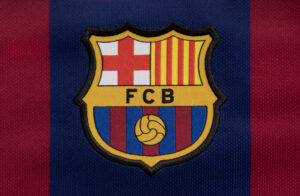Liverpool have done much better in the Premier League this season than in 2015-16, with a place in the UEFA Champions League all but secured one round before the end. But a closer look at their record this term reveals an unusual trend – fantastic results against top teams, appalling against the bottom-half ones.
Liverpool: Strong Aganist the Strong, Problems Against the Rest
Modern attack-minded teams tend to play with the back-line staying as high as possible over the course of the game, keeping the ball on the ground and starting their build-up from the back. Apart from that, centre-backs will often carry the ball far up the pitch, or simply offer themselves as an outlet for attackers and midfielders under pressure.
When playing against such teams, it makes a lot of sense to have someone like Roberto Firmino play up front and Adam Lallana close by. These two players have a remarkable knack for turning the pace on when it comes to pressing opponents into mistakes and taking possession in an advanced position, and from there a chance will often be created. A pass will come through and the space behind that high defensive line will be exploited.
This is probably one of the main reasons why Liverpool remain unbeatable by any of the top-table teams.
On the other hand, when a defence sits deep, with eight, sometimes nine outfield players placed in or around the box, keeping the space tight, this whole approach invariably fails. Not only because of a lack of exploitable space behind the back-line, but those teams generally don’t play out from the back – they send a long ball forward as soon as possible, aiming for the lone striker, usually a big player, strong in the air and with good hold-up play, while their wingers burst forward in support and a potentially dangerous counter-attack happens.
Solutions
After two home games without a win (a defeat to Crystal Palace and a 0-0 draw against Southampton), Jurgen Klopp’s team went and put four past West Ham United at the London Stadium. What was different this time?
First of all, it should be said that Slaven Bilic chose not to employ the tactics that proved so efficient against Liverpool this season, but to keep to his own recently discovered plan that saw West Ham undefeated for five previous matches, including a win over Tottenham Hotspur. It is in fact the same 3-4-3 system that seems to have turned Arsenal’s fortunes recently, and the one that Chelsea have been using under Antonio Conte throughout the season.
But Liverpool were arranged in a 4-4-2 diamond, with Adam Lallana playing behind Daniel Sturridge and Divock Origi, and with Philippe Coutinho in a deeper role that allowed him to act as a proper playmaker.
The first goal seemed like Liverpool again exploiting the space behind the back-line. Coutinho’s fabulous pass found the run of Sturridge, who used the fact that West Ham’s Jose Fonte was playing him on-side to get in front and around Adrian in the home team’s goal and put the ball in the net.
From that moment on, West Ham were naturally in a position to chase an equaliser, and the changes Bilic made later on, introducing Sofiane Feghouli, Ashley Fletcher and switching to a 4-2-3-1 shape came too late. The visitors were now flying, and their quality, especially that of Coutinho, was too much for the Hammers to cope with.
But another aspect that caught the eye was how much trouble Sturridge was causing for them. The explanation is very simple. Though many believe that the apparent difference in performance level between Sturridge and Origi is all about the indisputable difference in quality between the two strikers, it is actually the presence of Origi that was enabling Sturridge to pose serious questions for the West Ham defenders. Origi is a physical player, one that will get defenders engaged and draw much of their attention and energy on himself and away from his partner. And being a tricky player and classy finisher, that’s all Sturridge needs.
With the trio of Emre Can, Georginio Wijnaldum and Philippe Coutinho all more than capable of producing defence-splitting passes, while Adam Lallana also does his share of confusing the opposing defence and is a considerable threat himself, it may be that Jurgen Klopp has finally found a way to unlock teams defending in numbers.
The question will soon be answered, as Liverpool welcome Middlesbrough to Anfield on Sunday, in a game where the three points are vital for securing a place in the next season’s Champions League.
Main Photo:






